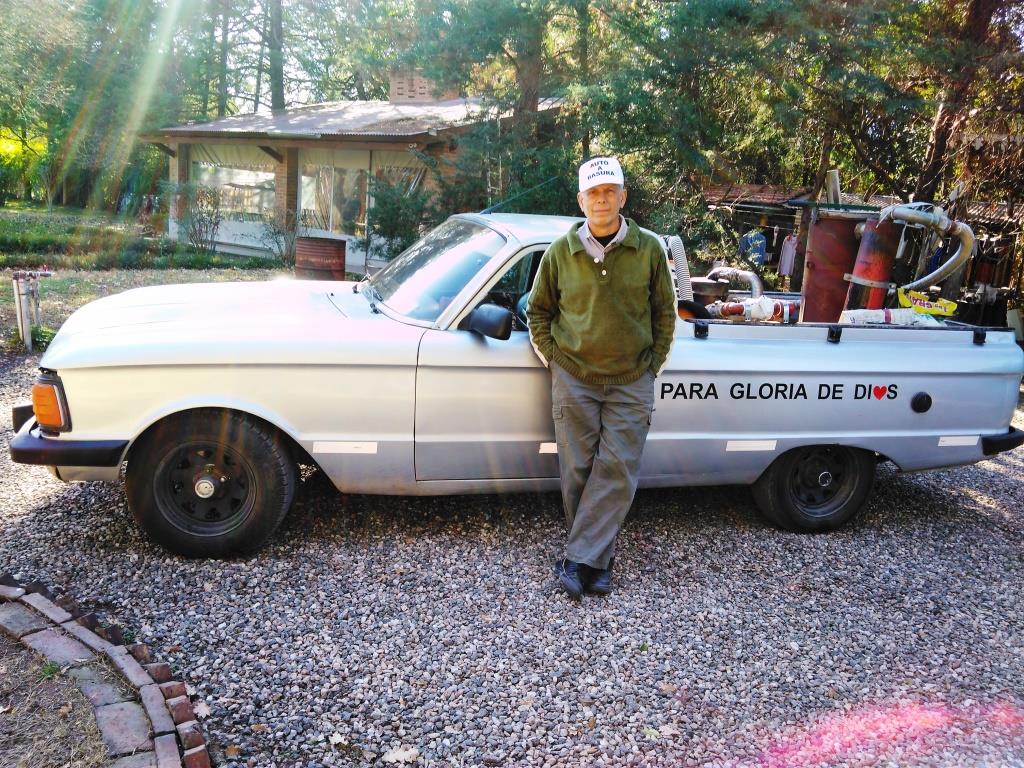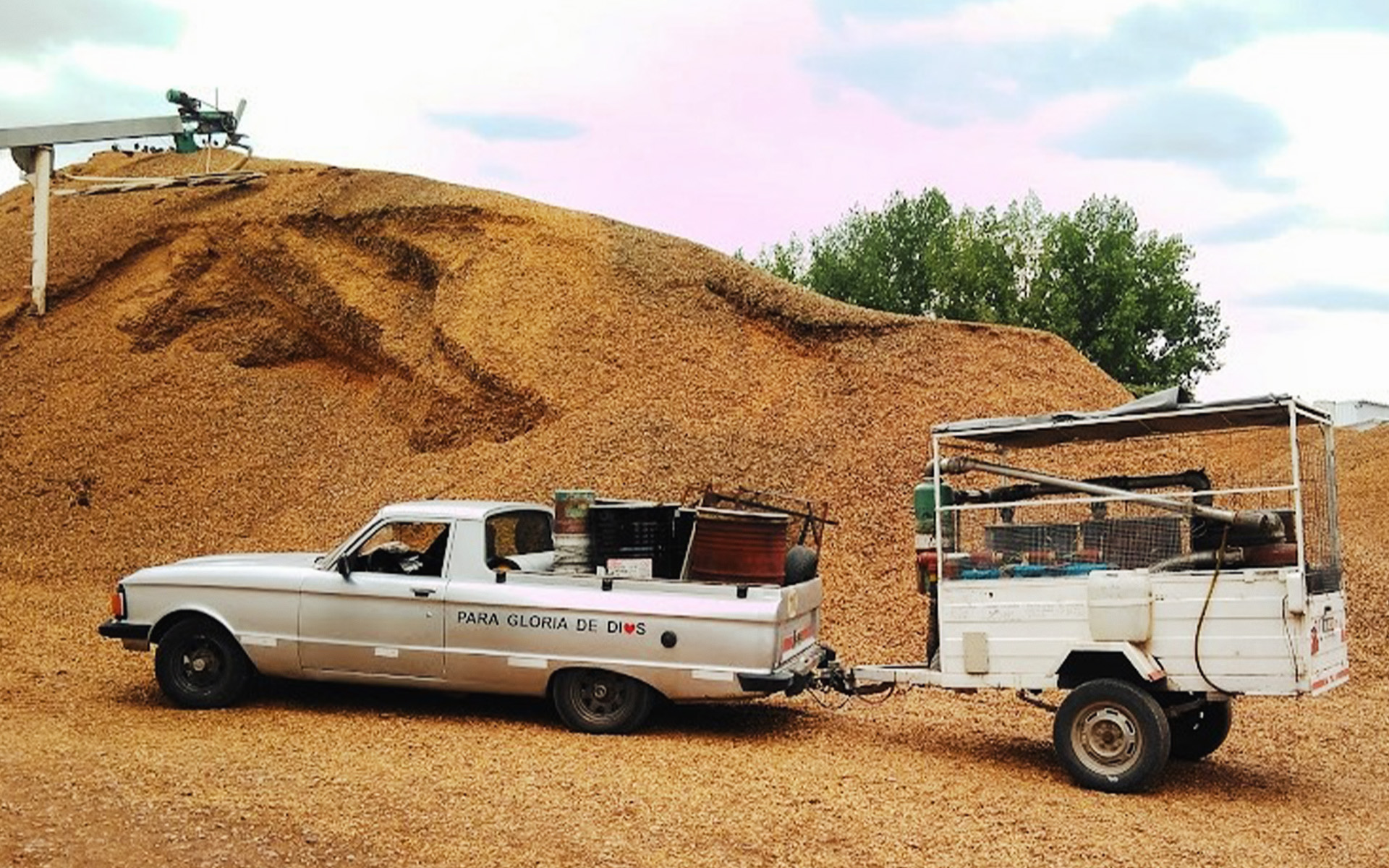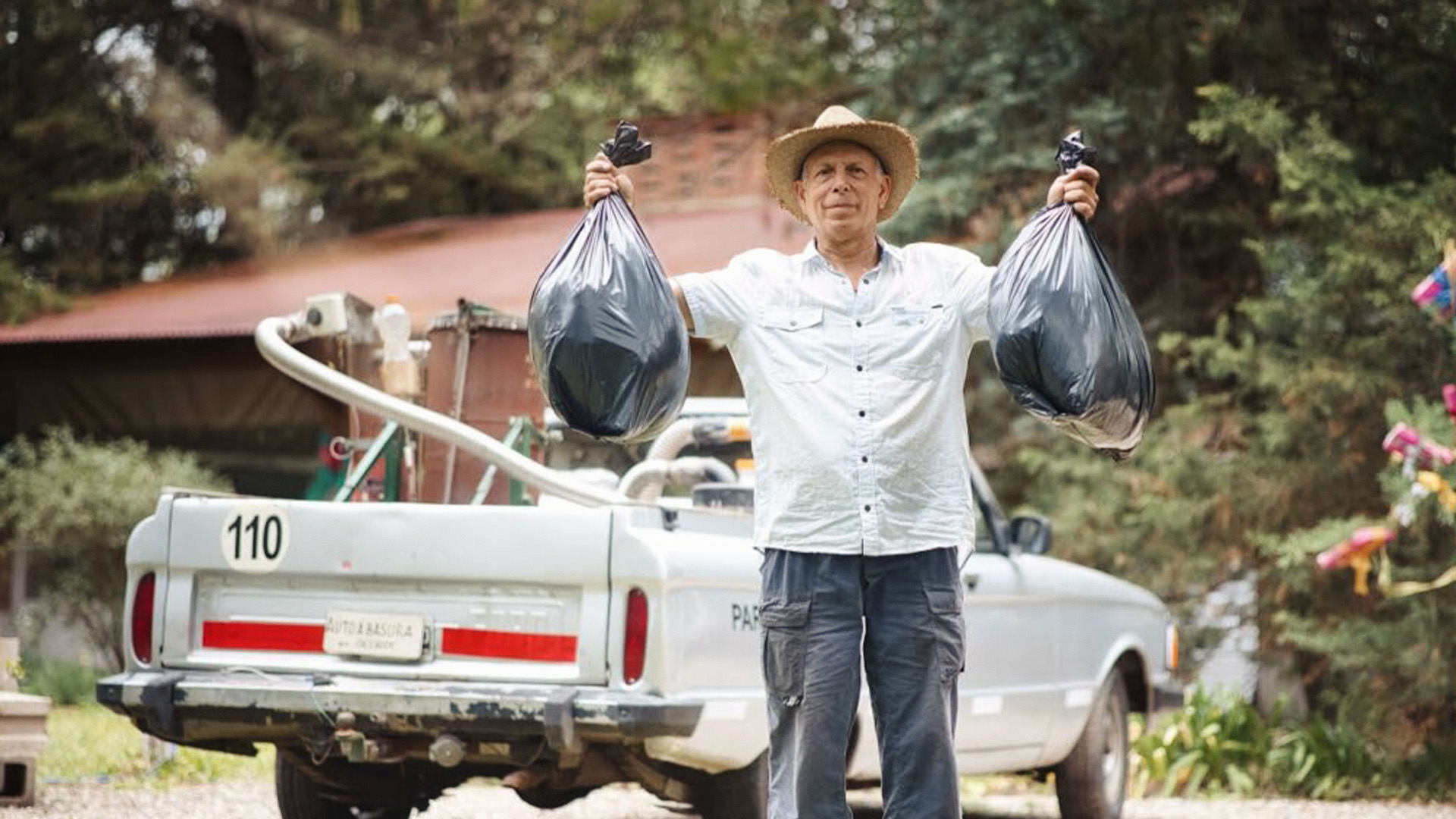the word ‘gasura’ originates from the combination of the Spanish words gas (petrol)+basura (garbage) – the origanl word will be used in the article
“I am Edmundo Ramos from Anisacate, a town in Córdoba, Argentina, and I am the creator of the garbage car”. So begins the interview with Edmundo, a retired engineer working since 2008 to create this revolutionary invention to help people and the environment. The car runs on ecological and natural fuel that does not pollute the environment.

How did he come up with the idea?
Ramos says that in 2008 he retired and had a lot of free time. “I had two options: watch TV and drink beer like Homer Simpson, or do something useful for humanity”. Edmundo comments that one of the mottos of his life is “those who do not live to serve, do not serve to live”. He decided to take advantage of his engineering studies, his experience, his tools, and his free time to do something useful for humanity, not for profit.
At that time, he began to think that oil is used “as if it were infinite”. Without this fuel, agricultural machines will not be able to harvest or collect food, leading to a global food crisis. The engineer maintains that it is necessary to anticipate an inevitable event so that it does not take us by surprise. Hence he came up with the idea of replacing gasoline with something that never runs out: garbage.
From his website, Edmundo explains that anyone can adapt their car to run on garbage, through a simple and inexpensive process with easily available materials. In addition, the plans of the gasifier are available in Spanish and English.
It involves converting dry and combustible waste through a gasifier that transforms it into gas. This gas is used as ecological fuel for a vehicle or motor generator. The Gasura does not emit polluting gases. It is an alternative to take care of the environment, it is sustainable, economic, and, above all, ecological.
The beginning
“In 2008 I went to Google and typed ‘cars running on garbage’ to see what experiences there were, what were the precedents, and I found nothing.” At first, Ramos began studying some gasogens used in World War II. Their system was similar, but they were too big, too heavy, and too difficult to design and manufacture. Therefore, this idea had to be simplified in some way.
One of the changes he introduced was to reverse the flow inside the gasifier. The old gasogen worked from top to bottom and the new one worked from bottom to top.
How does it work?
According to Ramos, “the idea is very simple”. It consists of a metal container (a barrel), where you load and cover the waste. This container has two holes, one at the bottom through which lights the fire (nozzle) and another one located at the top through which the smoke comes out. The system needs a fan for ignition. The fire generates smoke, a fuel composed of carbon monoxide. Edmundo also adds a few drops of water to produce thermolysis, which separates the water into hydrogen and oxygen. Thus, the Gasura, which is composed of carbon monoxide, hydrogen, and oxygen, comes out with dust and ashes, so it must pass through three filters to reach the engine clean.
Therefore, the engine uses carbon monoxide and hydrogen, which are fuels and returns the oxygen through the exhaust pipe. This means that the car contributes 20% oxygen to the environment while in use.
In short, my car on garbage does not consume gasoline, does not pollute, cleans the planet of garbage and provides 20% of oxygen while I am driving.
‘For the glory of God’
After 10 years of research, many trials, and many mistakes, in January 2018 Edmundo built his first gasifier, filled it with oak acorns, and lit it up. He was impressed by the gasura fire. The residues he uses must be dry e.g., fruit shells, pits, seeds, oak seeds, tree bark, wood chips, charcoal, or cinder.

In February of that same year, he bought his 1983 Ford Ranchera pickup truck and installed the gasifier. Yet, during almost two years of testing, he gave up on the project, after spending money, and time and giving up a lot of things. However, “a miraculous event happened, so I continued even though I had decided to give up. Something motivated me to continue. So, a few months later on the 2nd of October 2019 historical date I went out on the street, for the first time, with my car on garbage.”
“I have to thank that help that God gave me when I had decided to abandon the project, and that is why I have plotted on the car: for the glory of God”.
Autonomy
After that, many things happened, “an avalanche of events”. Firstly, it was necessary to patent the invention, and that takes about five years. The process has several stages, and each one is superior to the previous one. There are no similar patents in Argentina or Latin America. Now it remains to wait for what happens around the world. “We are in the final stretch”.
The maximum speed it reached was 115 km per hour. The maximum distance it traveled was from La Quiaca to Río Gallegos, 4,800 km only with gasura. That is, “with the garbage that my wife and I collected along the way. Zero gasoline”.
To achieve the goal of popularizing the invention, it was necessary to write a manual in Spanish and English in simple language and with many pictures. Edmundo also opened a YouTube channel to broadcast didactic videos so that people would be encouraged to replicate his invention.
Journey along Route 40
Edmundo and his wife undertook a trip through Argentina from the end of 2021 to February 2022, from La Quiaca (Jujuy) to Cabo Virgenes (Santa Cruz). A journey of 4,750 km only with Gasura.

The important thing is to know what waste is generated in each city and to use it.
Cinder is one of the best residues. However, Edmundo believes that it is best to find out which residues are generated in each place to use them. For example, in Jujuy and San Martín de los Andes he was given cinder, in Cafayate (Salta) he used remains of vines, in Catamarca and La Rioja nutshells, in San Juan coal, in Mendoza capital city pistachio and almond shells, in San Rafael apricot kernels and in Comodoro Rivadavia tree barks.
The gasura car around the world
His latest video “My Gasifier Around the World” features photos and videos of people using the gasifier in Zambia, Sweden, the United States, Bolivia, Paraguay, Argentina, and Burma. In the latter case, one man set up a gasifier factory and gave jobs to local people. It also feeds an electric motor generator to power the village. “Little by little this has been gaining momentum and people have copied it.” He adds, “I have no economic interest in this.”
Finally, Ramos comments that his next project is “plastigas”. To manufacture a plastic-based fuel and thus clean the planet of this waste. He also says that he declined the offer of three investors to create a factory of organic gasifiers because he wants to dedicate himself fully to “Plastigas”.
Edmundo and his wife were named illustrious citizens by the Anisacate City Council. An important recognition for this great inventor, who with his work contributes to the care of the environment and a sustainable means of transportation through ecological fuels.





